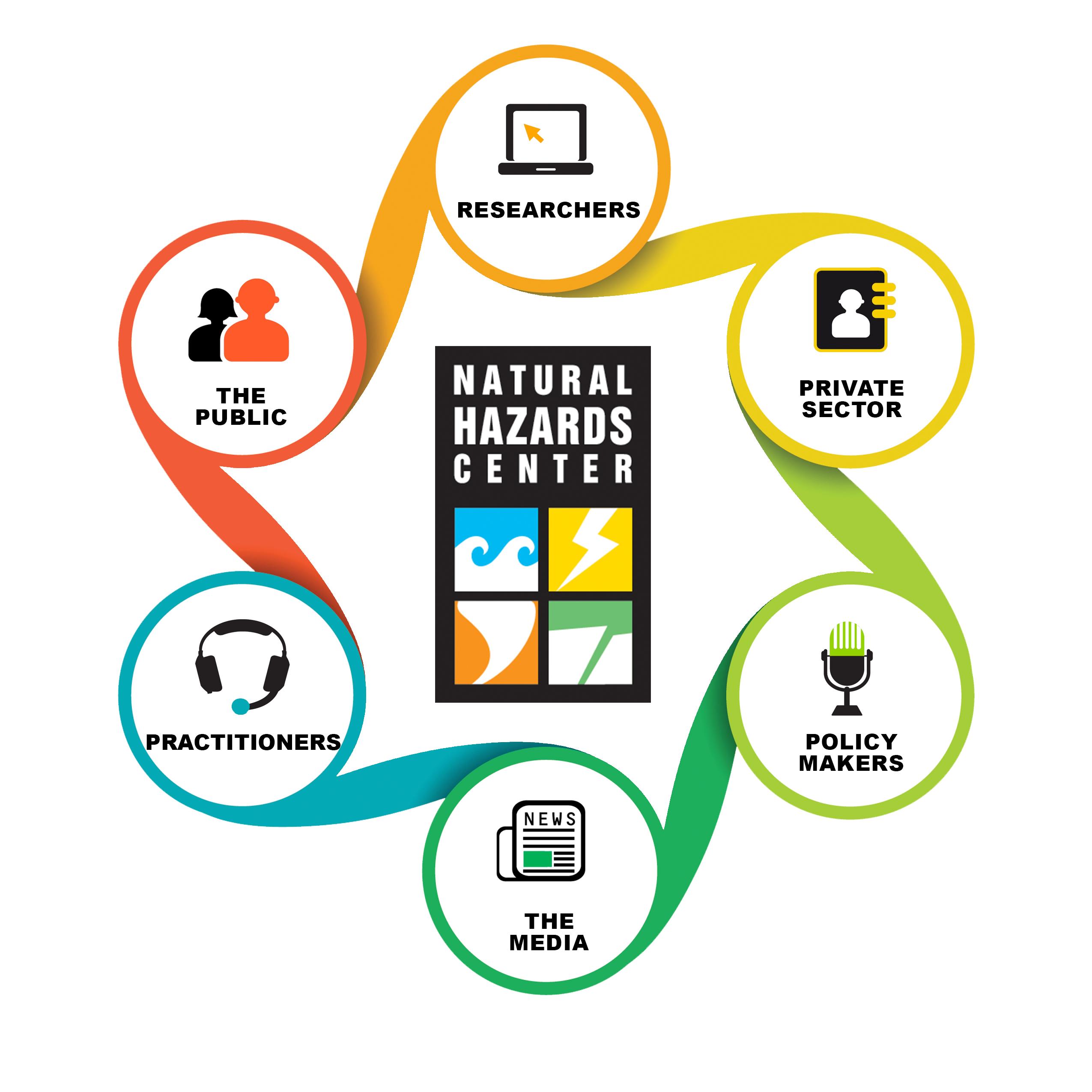Our Vision and Mission
Vision: We envision a just and equitable world where knowledge is applied to ensure that humans live in harmony with nature.
Mission: We are the National Science Foundation's designated information clearinghouse for the societal dimensions of hazards and disasters. Our mission is dedicated to reducing disaster harm through:
- Building connections between researchers, nonprofit and private sector professionals, the media, policymakers, and state, local, tribal, territorial, and federal officials;
- Translating and sharing hazards and disaster research and information;
- Advancing social science and interdisciplinary knowledge, with a special emphasis on socially and economically marginalized populations; and
- Training and mentoring a diverse next generation of hazards and disaster professionals.
We work to empower a culture where all people are educated and inspired to take positive action to mitigate hazards losses and to build stronger communities.
A Brief History: The Natural Hazards Research and Applications Information Center was founded in 1976, in response to the publication of the landmark Assessment of Natural Hazards Research in the United States (White and Haas, 1975). Among the recommendations included in what would come to be known as the First Assessment, was that a national information clearinghouse be created to compile and share information as well as to connect academic hazards and disaster research, emergency management, and policy communities. Shortly after the First Assessment was published, Gilbert White, who was the primary author of the work, led the charge to do just that. He and his wife Anne—along with a small group of committed staff and students—began what is today’s Natural Hazards Center at the University of Colorado Boulder.
The Center has been led by five directors over the years, who have involved teams of professional staff, research associates, graduate students, and undergraduate students who contribute to the vision and mission of the center. While the projects that the Center has initiated and the publications that we have produced have evolved, our focus on reducing the harm and suffering from disasters by applying new knowledge has remained constant.
21st Century Purpose: The Natural Hazards Center remains committed to creating a center of gravity for the hazards and disaster community. We care deeply about facilitating scientific and practice-oriented connections because we recognize that we are all living at risk, we are all interconnected, and we all have a role to play in effectively responding to 21st century social and environmental challenges. Everything we do at the Center is informed by a justice and equity approach, and our core values are focused on our commitment to human dignity, collective well-being, scientific understanding, and sustainable hazards mitigation.
Who We Are: Our Natural Hazards Center team currently includes a director, assistant director, professional staff, research associates, graduate student research assistants, and undergraduate research assistants. The work of the Center is guided by an advisory committee made up of partners from the public, philanthropic, and private sectors and academia. To actualize our vision and mission and to fulfill our organizational purpose, we work closely with many people, decision makers, and organizations.

Funding Support: The Center is funded by the National Science Foundation, Division of Civil, Mechanical, and Manufacturing Innovation (CMMI), Program on Infrastructure Systems and People (Award #1635593 and Award #2536173, Lori Peek, PI) with curent or past supplemental support from:
- Centers for Disease Control and Prevention (CDC)
- Federal Emergency Management Agency (FEMA) Hazard Mitigation Directorate
- National Institutes of Health (NIH)
- National Oceanic and Atmospheric Administration-National Integrated Drought Information System (NOAA-NIDIS)
- NOAA National Severe Storms Laboratory (NOAA-NSSL)
- NOAA Weather Program Office (NOAA-WPO)
- U.S. Army Corps of Engineers (USACE)
- U.S. Department of Health and Human Services Office of the Assistant Secretary for Preparedness and Response (HHS-ASPR)
- U.S. Geological Survey (USGS)
In addition to the Clearinghouse award through the NSF, we have contracts and grants from a variety of other federal agencies, nonprofit organizations, and philanthropic donors.